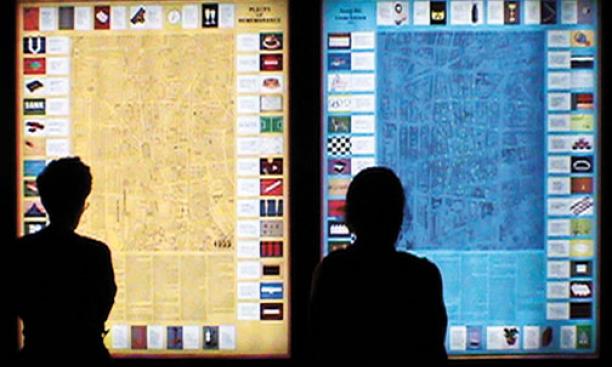

Places of Remembrance, a pair of large lightboxes by Renata Stih and Frieder Schnock of Berlin, have been installed on the second floor of East Pyne. The lightboxes depict the conceptual artists’ award-winning memorial, created in 1993, that consists of 80 street signs on lampposts in a Berlin neighborhood that housed a thriving Jewish population before World War II. The signs reveal how German Jews systematically were stripped of fundamental rights: Each displays a different Nazi ordinance that placed restrictions on Jews; the reverse side shows a pictogram to illustrate the edict.
The lightboxes — shown here at an earlier location but installed on facing walls in East Pyne, near the entrance of the German department — include maps of the neighborhood in 1933 and 1993, surrounded by the 80 signs.
Thomas Levin, an associate professor of German who has long known the artists, said the works demonstrate “how to remember something terrible without sensationalizing or offending those who suffered.” The lightboxes are on long-term loan to the University Art Museum by the artists. Museum director James C. Steward said the museum is committed to art experiences across the campus and added: “‘Places of Remembrance’ is especially timely as we think about how memory is shaped, and how works of art shape our understanding of the past — a major issue we look forward to exploring next year on the 10-year anniversary of 9/11.”
